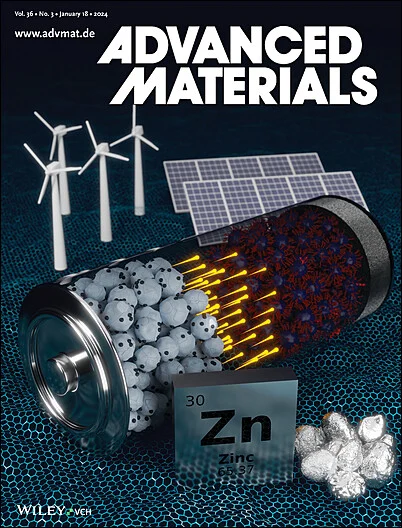Stretchable and Permeable Liquid Metal Micromeshes Featuring Strain-Insensitive Resistance Through In Situ Structural Transformations
IF 27.4
1区 材料科学
Q1 CHEMISTRY, MULTIDISCIPLINARY
引用次数: 0
Abstract
Gallium-based liquid metals hold promises for applications in stretchable electronics and beyond. However, these materials often encounter notable resistance increases during stretching and have negligible permeability to gases and liquids. This study presents an in situ structural transformation mechanism to create stretchable and permeable liquid metal micromeshes with strain-insensitive resistance. These micromeshes are fabricated by spin-coating liquid metal onto microfiber textiles and subjecting them to several stretching cycles. Consequently, the micromeshes transform from a smooth finish to wrinkled textures due to the growth in their oxide nanoskins. The distinct microstructure alters the stretching-relaxing mode to folding-unfolding, thereby minimizing fluctuations in resistance. The practical significance of this development is demonstrated through the fabrication of wearable heaters and LED matrices using transformed liquid metal micromeshes. Moreover, when integrated into Janus textiles featuring unidirectional water transport, these micromesh conductors act as sensing electrodes capable of acquiring high-fidelity biopotentials, even during intense sweating. These advancements highlight the capability of ambient air as a powerful reactive environment for tailoring the properties of microscale liquid metals.

求助全文
约1分钟内获得全文
求助全文
来源期刊

Advanced Materials
工程技术-材料科学:综合
CiteScore
43.00
自引率
4.10%
发文量
2182
审稿时长
2 months
期刊介绍:
Advanced Materials, one of the world's most prestigious journals and the foundation of the Advanced portfolio, is the home of choice for best-in-class materials science for more than 30 years. Following this fast-growing and interdisciplinary field, we are considering and publishing the most important discoveries on any and all materials from materials scientists, chemists, physicists, engineers as well as health and life scientists and bringing you the latest results and trends in modern materials-related research every week.
 求助内容:
求助内容: 应助结果提醒方式:
应助结果提醒方式:


